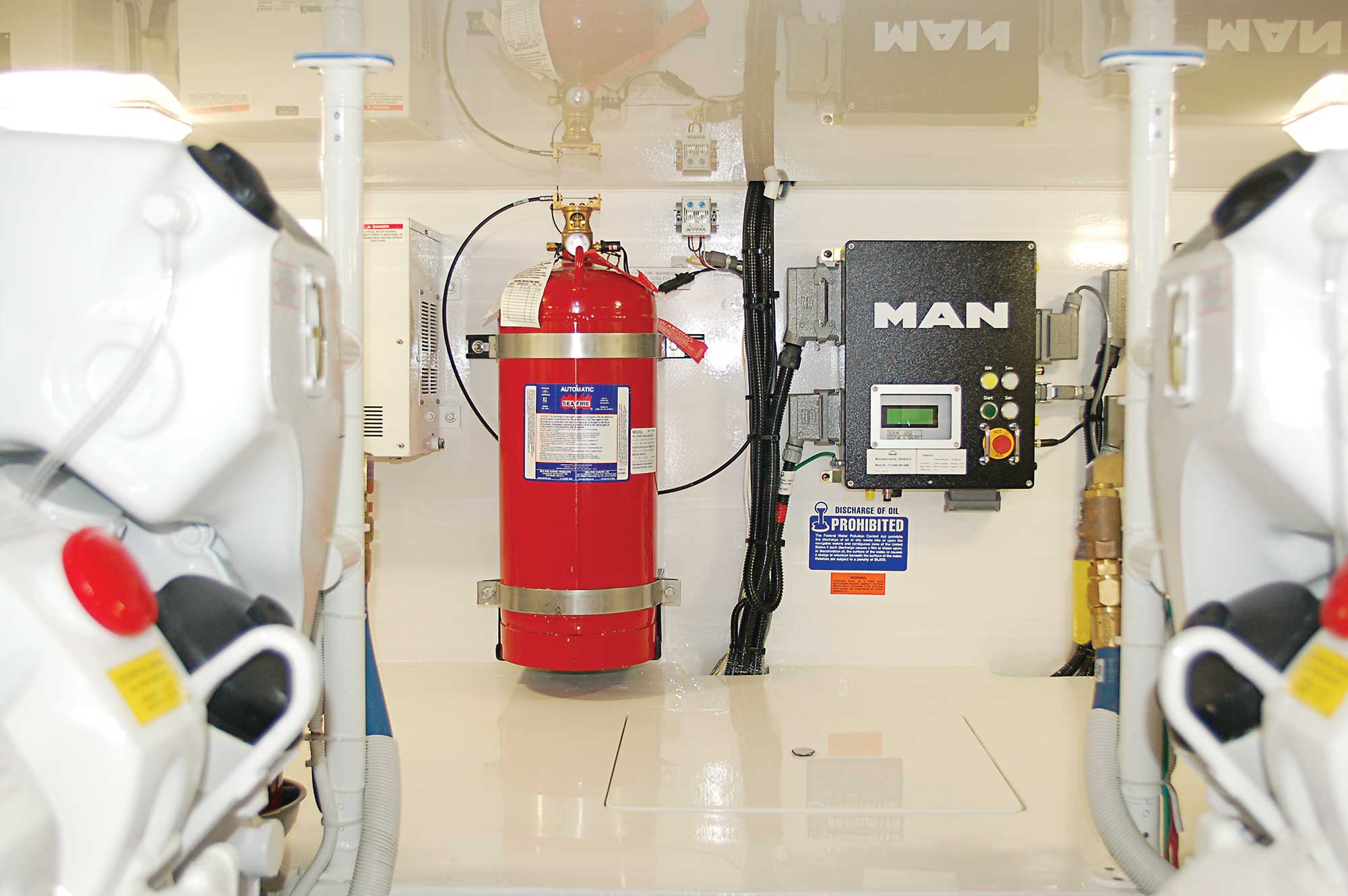Crappie Fish: Expert Tips for Successful Angling
Are you looking for a rewarding and relaxing activity that can connect you with nature? Crappie fishing might just be what you're searching for.

Crappie, including both black and white species, are common freshwater fish found in North America. They are popular among anglers for their abundance and the challenge they present, making them an excellent catch for both beginners and experienced fishers.
Understanding the behavior and habitat of crappie is crucial to successful fishing.
These fish are known for their seasonal habits, especially during the spring when they spawn near shallow waters.
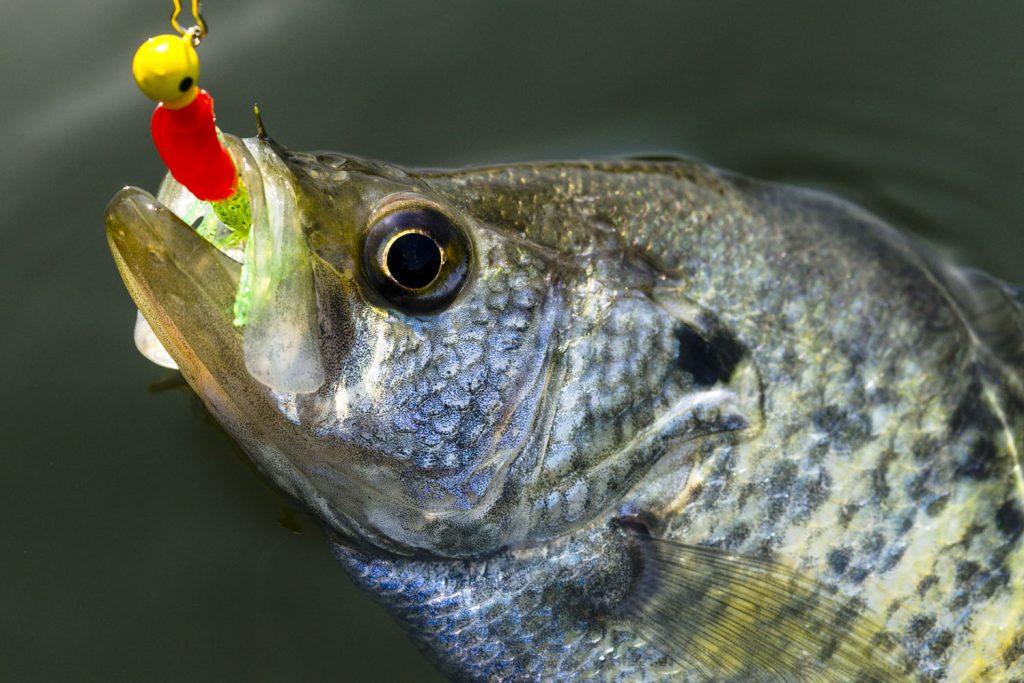
In the heat of summer, crappie often seek deeper, cooler waters, so knowing the right spots to fish can make all the difference.
Fishing for crappie involves various techniques and equipment, such as using a jig and bobber setup, which is particularly effective.
Anglers need to adapt their methods to the seasonal changes and different water temperatures.
Whether you're ice fishing in the winter or casting in the summer, having the right gear and knowledge can turn a good day into a great catch.
Key Takeaways
- Crappie are abundant freshwater fish popular with anglers.
- Seasonal habits influence crappie fishing success.
- Using the right techniques and equipment is essential.
Understanding Crappie
Crappies are popular freshwater fish known for their unique physical traits and wide range of habitats. They belong to the Centrarchidae family and are commonly found in various parts of North America, often drawing the interest of anglers.
Species Overview
Crappies belong to the genus Pomoxis and come in two main species: Pomoxis nigromaculatus (Black Crappie) and Pomoxis annularis (White Crappie). Both species are part of the sunfish family, Centrarchidae.
Black Crappies are generally found in clearer waters, while White Crappies tend to inhabit more turbid environments. They are both prized for their sport and food value, making them a favorite among anglers.
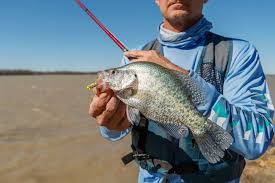
Physical Description
Crappies have distinct physical characteristics that differentiate them. Black Crappie, or Pomoxis nigromaculatus, typically have 7 or 8 spines on their dorsal fin and a pattern of scattered speckles on a darker body.
White Crappie, Pomoxis annularis, usually have 6 dorsal spines and a more streamlined body with vertical bars. Both species grow to about 10-15 inches in length and can weigh from 0.5 to 2 pounds.

Habitat and Range
Crappies are native to North America and thrive in a variety of freshwater habitats, including lakes, ponds, reservoirs, and slow-moving streams.
They are common in the northern United States, Great Lakes regions, and as far south as Florida. These fish prefer environments with ample vegetation, which provides cover and abundant food sources.
They adapt well to different water conditions, from the cool, clear waters of the North to the warmer, murkier waters of the South.
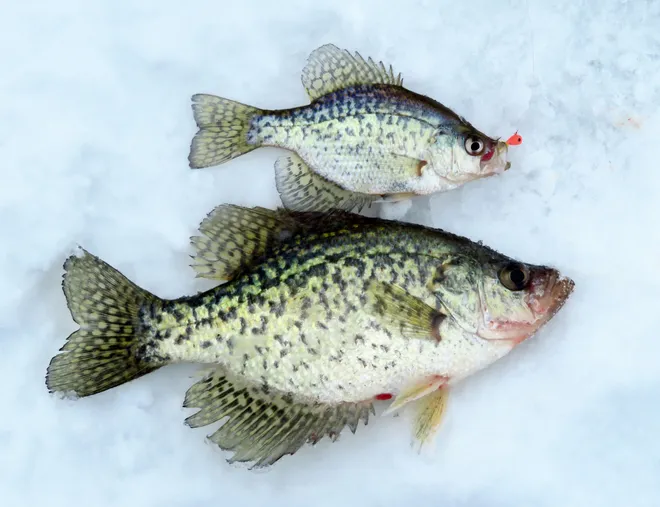
Behavior and Diet
Crappies exhibit interesting behaviors and have diverse diets. They are schooling fish, often found in large groups, which helps them avoid predators.
Their diet mainly consists of insects, crustaceans, zooplankton, and small fish like shad and minnows.
They are most active during dawn and dusk, feeding aggressively during these times.
Understanding their seasonal and daily feeding habits can greatly improve fishing success, as they tend to move to different depths and locations based on food availability and water conditions.
Crappie Fishing Techniques
Fishing for crappie can be both enjoyable and rewarding. From basic setups to more advanced strategies, successful techniques often involve the right combination of rods, reels, lines, and bait.
Basic Angling Methods
To start, anglers often use a light rod paired with a spinning reel.
Light rods and reels are crucial as they help detect gentle bites.
Fishing with a bobber is effective: place a minnow or small jig below the bobber, cast it out, and let it float. Adjust the depth depending on where crappie are feeding.
Casting and retrieving small jigs or spinners is another method.
Cast near structures like brush piles or underwater vegetation. Allow the jig to sink and use a slow, steady retrieve to attract crappie.
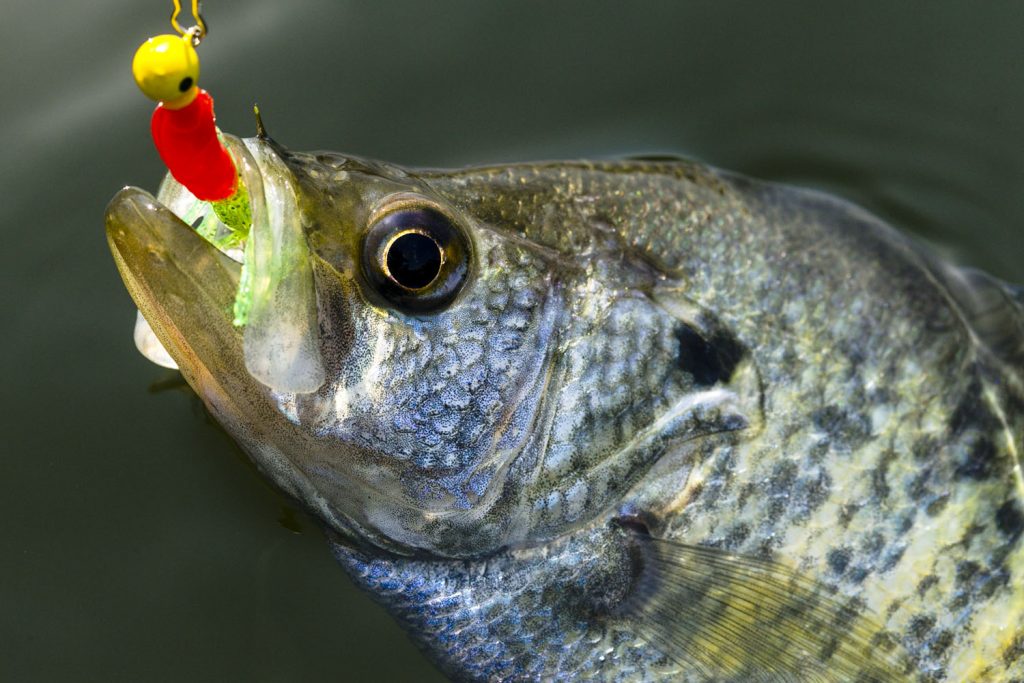
Lure Selection and Usage
Choosing the right lures can greatly impact success.
Jigs are versatile and come in various colors and sizes. Pair them with soft plastic bodies that mimic baitfish.
Crappie jigs are most effective when lightly twitched during retrieval to simulate prey.
Spinners and crankbaits attract crappie with their flash and movement. Use smaller sizes that match the prey in the area.
When trolling, spinners and crankbaits can cover more water, increasing chances of finding fish.
Live bait like minnows is also popular.
Hook the minnow lightly through the lip or back and let it swim freely near structures where crappie hide. This method often entices larger fish.

Advanced Tactics
Advanced anglers can try techniques like spider rigging, ice fishing, and long-line trolling to catch more crappie.
Spider rigging is an advanced technique that involves using multiple rods spread out from the boat. This method covers a wide area and helps locate crappie schools.
Attach different lures or live bait at various depths to maximize chances of a catch.
In colder months, ice fishing for crappie becomes popular.
Use short, sensitive rods and small jigs tipped with waxworms or spikes. Drill several holes to find active fish, and jig slowly near the bottom.
Another advanced tactic is long-line trolling.
This involves dragging multiple lines behind a moving boat. Use split shot weights to control lure depth and maintain consistent speed to imitate fleeing baitfish.
Seasonal Fishing Patterns
Crappie fish exhibit specific behaviors that vary with the changing seasons, making it essential to adjust your techniques accordingly. Recognizing these patterns during spring and summer can significantly boost your chances of success.
Spring Spawning Season
During the spring, crappies move to shallow waters to spawn. Water temperatures around 60-68°F signal the start of the spawning season.
Male crappies build nests in shallow, calm areas with vegetation and gravel bottoms. They guard the nests after females lay eggs.
Anglers should focus on these shallow regions, using minnows or small jigs to attract crappie.
Fishing near vegetation, docks, and submerged structures proves effective. Pay attention to water clarity and weather patterns, as sudden changes can affect crappie behavior.
Summer Strategies
In the heat of summer, crappies retreat to deeper water, typically between 18 to 20 feet. They form schools around structures like drop-offs, submerged trees, and brush piles.
The thermocline, a layer where water temperature rapidly changes, often defines the depth crappie inhabit.
Effective summer techniques involve vertical jigging or trolling with small crankbaits.
Using a fish finder helps locate schools of crappie. Look for areas with stable water temperatures and ample oxygen. Fishing during early morning or late evening, when the water is cooler, can also increase success.
Choosing Fishing Locations
Picking the right spots for crappie fishing can make a big difference in your success. Knowing the type of water body and the presence of cover and structure is key.
Understanding Water Bodies
Crappie can be found in diverse water bodies like lakes, reservoirs, streams, and ponds.
In lakes and reservoirs, they often move to deeper waters during hot summers and warmer shallows in spring.
Ponds and smaller streams might not offer much depth variation, so crappie stay around cover.
Clear water allows crappie to see farther, making them more wary of anglers, while mud or sand bottoms can affect their visibility and feeding habits. Adjust your fishing tactics based on these conditions for the best results.

Importance of Cover and Structure
Crappie are drawn to areas with cover and structure such as stumps, sunken trees, and vegetation. These spots offer hiding places from predators and access to food.
In lakes and reservoirs, look for submerged structures or artificial habitats created by local fish and game departments.
Crappie like to nestle around structures, especially in clear waters where they seek protection.
Vegetation, whether in ponds or small streams, also attracts crappie because it provides both cover and food. Finding these key areas improves your chances of a successful fishing trip.
Crappie Fishing Equipment
Crappie fishing requires specific gear that can improve your chances of catching this popular game fish. The essential equipment includes the right rods, reels, lines, and hooks.
Rods and Reels
For crappie fishing, ultralight or light spinning rods are ideal. These rods usually range from 5 to 7 feet in length, providing the sensitivity needed to detect subtle bites.
Graphite rods are popular due to their light weight and sensitivity.
Reels should match the rod's capacity. Spinning reels are the most common choice as they are easy to handle and offer good line control.
Ensure your reel has a smooth drag system to prevent line breaks when you hook a large crappie.
Lines and Hooks
Fishing lines used for crappie are typically monofilament or braided line.
Monofilament lines are affordable and have some stretch, making them forgiving during fights. A line size of 4 to 8 pounds test is recommended.
On the other hand, braided lines offer less stretch and are more sensitive, allowing for better hook sets.
When it comes to hooks, using size 4 to 8 is effective for crappie. Smaller hooks are preferred as crappie have relatively small mouths.
Aberdeen hooks and circle hooks are popular choices. Aberdeen hooks are thin and light, making them perfect for live bait, while circle hooks reduce the chances of deep hooking the fish.
The Crappie Fishing Experience
Crappie fishing offers both excitement and a key role in conservation. Anglers find thrill in the chase and satisfaction in contributing to the population management of these popular game fish.
Crappie as Game Fish
Crappie are sought-after game fish due to their abundant population and wide distribution. They are classified as panfish and are known for their mild, tasty flesh which makes them a favorite among anglers.
Fishing for crappie can be challenging and rewarding. Techniques such as jig fishing and using live bait are effective.
Crappie often hide around structures and drop-offs, making the use of fish finders valuable. Understanding their seasonal movements helps improve catch rates, as they tend to suspend in deeper waters during winter.
Conservation and Population Management
Managing crappie populations is critical to maintaining healthy fisheries. Conservation efforts include monitoring fish populations, enforcing size and bag limits, and habitat restoration.
Crappie are known to thrive in various habitats, from lakes to reservoirs. Habitats are often enhanced by adding structures that provide shelter for crappie, promoting healthy ecosystems.
Anglers play a role by participating in catch-and-release practices and adhering to local regulations to ensure sustainable fishing.
Involving communities in conservation education helps spread awareness about the importance of preserving crappie populations. Such efforts ensure that future generations can continue to enjoy the crappie fishing experience.
Practical Tips for Anglers
Location, Location, Location: Crappie are often found near structures like docks, bridge pilings, and submerged trees. Anglers should look for these areas as prime spots for fishing.
Bait Choices: Live minnows are a popular choice for crappie anglers. Worms can also be effective, but live minnows tend to attract more bites. Soft plastic baits and marabou jigs are also excellent options.
Jig Techniques: Anglers should try different jigging techniques. Using marabou jigs near submerged trees and stumps can be particularly effective. Meanwhile, "shooting" or casting jigs under docks can also yield good results.
Rod Control: Keeping the rod tip low while fighting fish helps maintain control. It also reduces the risk of breaking the rod. This technique is crucial for successfully landing crappies.
Using Monofilament Line: Though many anglers use braid or fluorocarbon, monofilament line can be just as effective. It is cheaper and works well for crappie fishing.
Fishing Depth: While it's a myth that crappie always stay deep in the summer, many do move to cooler, deeper waters. However, some crappies stay shallow, especially near structures.
Weather Considerations: Crappie fishing can be highly variable depending on weather conditions. Anglers should pay attention to weather patterns and adjust their strategies accordingly.
Light Tackle: Using light tackle, such as a light spinning rod and reel, can make it easier to feel bites and fight crappie effectively.
Observe the Schools: Crappies often travel in schools. Once you find a school, you can catch multiple fish in a short amount of time.
Time of Day: Early morning and late evening are usually the best times to fish for crappie, as they are more active during these times.
Frequently Asked Questions
This section covers common questions about crappie, including their differences from other species, size regulations, taste, fishing techniques, and cooking methods.
What distinguishes Black crappie from other crappie species?
Black crappie have a deeper body shape and seven to eight dorsal spines. They also have a pattern of black spots on their sides that form random, irregular shapes. Other crappie species may have different spot patterns and body shapes.
What are the size regulations for catching crappie?
Size regulations for crappie fishing can vary by location. Many areas have minimum size limits, often around 9 inches, to ensure sustainable populations. It's essential to check local fishing regulations before you go fishing to ensure you comply with the rules.
How does crappie taste compared to other freshwater fish?
Crappie have a mild, slightly sweet flavor and tender texture that makes them popular among anglers. Some people compare the taste to other delicate freshwater fish like perch or bluegill. Crappie are versatile and can be prepared in several ways, making them a favorite for fish fries.
What are some popular crappie fishing techniques for beginners?
Beginners can try jigging or using live minnows for crappie fishing. Fishing near structures like submerged trees or docks can increase your chances of success. Early morning and late afternoon are typically good times to fish for crappie.
What is the difference between Sac a lait fish and crappie?
"Crappie" and "Sac a lait" refer to the same fish species. "Sac a lait" is a term used primarily in Louisiana and translates to "milk bag" in French. Both terms are used to describe the popular freshwater fish known for its mild taste and ease of catching.
Can you provide a basic recipe for cooking crappie?
To deep-fry crappie, coat the fish in cornmeal and fry until golden brown. If baking, brush the fish with melted butter and lemon juice, then bake in the oven at 400 degrees Fahrenheit for about 20 minutes.
Charlie is Editor-in-Chief of Sea Magazine
